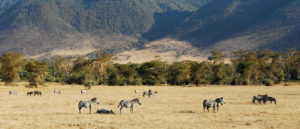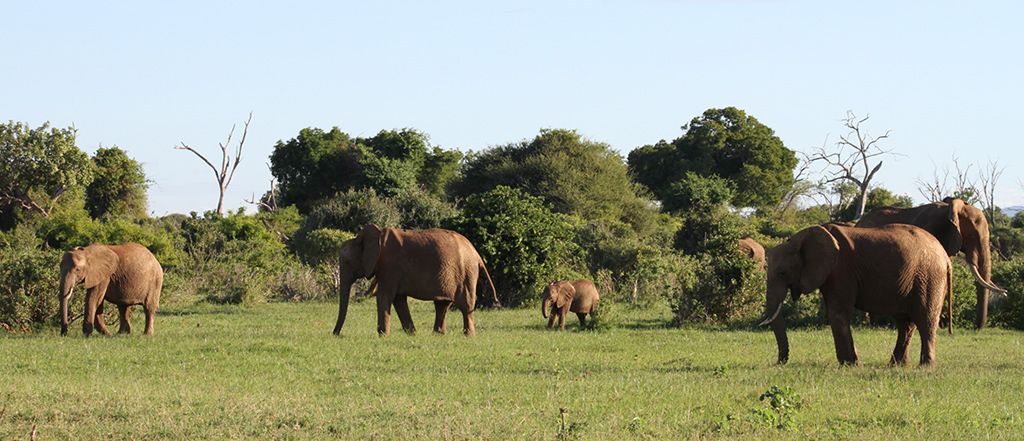When you think about wildebeest migration, you may picture hundreds of thousands of zebras, predators charging into croc-infested rivers. In an ancient cycle, it often literally covers huge plains as far as the eye can see. This is what most of us think wildebeest migration as one of the truly wondrous natural spectacles in Africa.

Here are a few little-known facts from travellers who’ve witnessed the spectaclesular first-hand in Masai Mara, Kenya:
The migration is a predictable phenomenon.
The wild animals like zebra and wildebeest trigger to move by the simple meteorological phenomenon; rain. The long rains soak the ground in East Africa during April and May. This means,some of the camps remain closed for renovations and the roads are also challenging.
Once it becomes soft, soaking rains stop, the short glass plains of the southern Serengeti spring come to life with great masses of sweet and delicious grass. It’s perfect for zebra and wildebeest that have returned here from the previous year’s migration to start moving north, hovering up the sufficient tender grasses along the way. However, the wildebeest and zebra travel together and graze in real harmony as they eat different parts of the grasses.
During the month of July, the animal herds ought to reach the northern Serengeti – readily available to perform thrilling Mara river crossings. This is exactly how Masai Mara migration works, except when the rains are late or early or if it rains again unexpectedly and some of the herds turn back to the feast on the fresh new grass.
The main point is like so much in nature; it will be safe for you to throw off the idea of a general schedule, when it comes to the wildebeest migration in Kenya and stay flexible, informed by the experts.
The wild animals dive blindly and madly in the water.
Mara river crossings are considered as the main highlights of this natural spectacle. There are few other sights that beat them for sheer drama and adrenaline value. There is a popular perception about wildebeest migration that the wildebeest species are galloping at a fast speed and crash into the water, following a sort of autopilot herd instinct. But this isn’t the real case at all.
More often, a herd will reach the Mara River at a casual, leisurely pace and hang out on its banks for days, frustrating tourists and crocs alike. No one knows how and why they suddenly decide to cross but some sorts of primeval sign is provided and the first intrepid pioneers scuttle down the very rocky banks and steep sides.
You will naturally root for those brave fore-runners and watch the heart-breaking experiences when a wild animal breaks the back leg trying to climb a bank or loses its precarious grip and falls back down onto others. This is exactly something that makes the wildebeest migration a truly spectacular to believe – the agony and ecstasy of survival, unfiltered, unedited in raw true lifestyle.
Predicting Mara River crossings right is one of the most inexact sciences in Africa – you can be in the right place at the right time, but until the wildebeest decide they are readily available, nobody gets wet.
The wildebeest migration includes huge herds of zebras and baby gnus.
The calving season starts at the end of January and the first two weeks of February. It’s considered as the peak birth season as about 400,000 births happen during the three-week period. The babies run as quickly as their moms within 48 hours and there are very heart-touching scenes of small wildebeest running and zebras nuzzling their foals.
But remember that, no aspect of the wildebeest migration is for the faith-hearted. Predators feed on newborns and you’ll likely see scenes of fawns being snatched by lions and chased by cheetah. The predators are one of the main reasons why you should book Mombasa to Masai Mara safari.
It is the nature’s game and while many wild animals become the prey that sustains lion’s pride, enough to protect the future of the greatest wildebeest herds. However, the wildebeest migration is exactly what the circle of life is all about.
Hundreds of wildebeests move together in a group.
You will get to see hundreds wild species on the move altogether in a group. They divide into mega herds that comprise of hundreds and hundreds of animals traveling on different routes in more or the same direction.
Animals of the mega herds can scatter out with the forerunners arriving the new place sometimes a day or two prior to the strugglers –an early warning sign for the guides.
You should make the most out of Mombasa to Masai Mara safari.
The Mara River crossings are very exciting adventures that can be part of a Mombasa to Masai Mara safari. In addition , the crossings is something that everyone wants to see once or several times in a lifetime. But you shouldn’t overlook the unsung delights of the off season in Masai Mara.
Though the wildebeest migration is perpetual and circular, the animals return to the starting point in the southern Serengeti during September to March. This means, you have still the opportunities to experience the epic scenes of hundreds of thousands of wildebeest and zebra crossing the wide open plains of the Masai Mara.Moreover, rutting, mating, and calving are the thrilling activities. Predator actions are assured during calving and include heart-stopping chases.
Booking Mombasa to Masai Mara Safari Holiday –
Every true adventure enthusiast intends to experience the wildebeest migration at least once in their lifetime. There is no other animal phenomenon on the world that beats this natural spectacle.
Migration happens in the months of July to end of September every year. This means, you can see the migration during this time of the year as the wildebeest cross from Serengeti to Kenya Masai Mara and back to Serengeti Tanzania. So choose the right time and destination that best suits you. It’s time to let your Mombasa to Masai Mara safari, Kenya Masai Mara tour expert tailor-make a safari for you.
Remember that, the incredible spectacle takes place in a legendary wildlife destination like Masai Mara Game Reserve. There is a huge availability of resident animal species including the Big Five in a year-round setting like Masai Mara. This is where the real Africa lies. Seeing the migration is truly a cherry on the top for an incredible safari experience.
What are you waiting for? Book your Mombasa to Masai Mara Safari through African Memorable Safaris now and make the most out of your vacation. Please stay connected with us on Facebook, Twitter, Google Plus, and Instagram social media networks!

